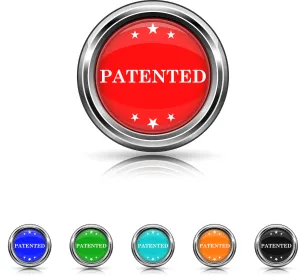Last week, the Federal Circuit issued another precedential decision on inventorship. However, unlike in HIP, Inc. v. Hormel Foods Corporation (22-1696) where the appellate panel found the purported inventor’s contribution to be “insignificant in quality . . . [when] measured against dimension of the full invention,” the panel in Blue Gentian, LLC v. Tristar Products, Inc. (21-2136) found the inventorship to be in need of correction. So, what made this set of facts different? In short, contribution, corroboration, and collaboration, each of which is discussed in more detail below.
First, a little background. Blue Gentian sued Tristar for infringement of six patents, all of which relate to an expandable hose and named a sole inventor Michael Berardi: U.S. Patent Nos. 8,291,941, 8,291,942, 8,479,776, 8,757,213, D722,681, and D724,186. Tristar counterclaimed to correct inventorship and, more specifically, to add Gary Ragner as a named inventor. The district court agreed that Ragner should be added as an inventor.
As made clear in the appellate opinion, a single meeting in August 2011 was central to the district court’s inventorship holding and the basis for Blue Gentian’s appeal. In that meeting, Ragner and six others from Ragner Technology Corporation met with Berardi. The appellate panel sets the scene for the meeting discussing a) Ragner Tech’s interest in finding investors to help the company commercialize an expandable hose branded MicroHose, b) Ragner’s advanced degrees in physics and aerospace engineering and other expandable hose patents, c) Berardi’s sociology degree and lack of knowledge or experience in hose design, and d) Berardi’s claim of nebulous conception prior to the meeting. Many of the details of the discussion during the meeting were found to be corroborated by testimony from three of the six participants from Ragner Tech.
During the meeting, the manufacturing process and inner components of the MicroHose were shown to Berardi. For example, the document shared with Berardi described an inner “TPU Elastomer” layer and a reinforcement layer made of polyester yarn. In addition, Ragner presented a prototype of the MicroHose. While the prototype of the MicroHose had a yarn valley cord attached to the outside of the hose rather than the full fabric cover that Ragner Tech wanted to include on the commercial version, the prototype also had a vinyl inner tube for water to flow through and a wire coil spring that allowed the hose to return to a retracted state after expansion. According to Ragner, Berardi asked whether the wire spring could be replaced with elastic, to which Ragner responded affirmatively and described previous prototypes that employed surgical tubing to allow for the hose retraction. Berardi denies asking this question or having any discussion of prior prototypes and only vaguely remembered possibly hearing about elastomer from Ragner. The three testifying Ragner Tech participants were not able to confirm either of Ragner’s or Berardi’s accounts in this regard.
Berardi testified that he went to Home Depot a few hours after the Ragner Tech meeting and purchased materials to make his own expandable hose prototype where water flowed through an outer tube and an inner elastic tube was used for retraction. Three months later, Berardi filed his first expandable hose patent application (which was eventually issued as the ʼ941 patent). After several more patents issued, Blue Gentian (licensee of Berardi’s patents) sued Tristar (licensee of two of Ragner’s patents).
Corroboration
Since the named inventors of a patent are presumed correct, Tristar was required to show by clear and convincing evidence that Ragner should have also been named. Moreover, Ragner’s testimony needed to be sufficiently corroborated. On this front, the district court found the testimony to be sufficiently corroborated under the rule of reason test, i.e., where “all pertinent evidence is examined in order to determine whether the inventor’s story is credible” overall. The appellate court found no error in the lower court’s fact-finding. In particular, the opinion notes that corroboration is based on evaluation of the evidence as a whole and that no single piece of evidence alone was needed to establish the credibility of Ragner’s account of inventorship. In this aspect, the panel found no error in the lower court’s consideration of Ragner’s other expandable hose patent, the prototype, and other individual witness testimony to establish corroboration. To rub further salt in the wound, the panel also explained that Berardi’s first prototype (physical evidence created within a day of the meeting) provided a strong indication that Ragner’s story was credible.
Contribution
The panel opinion reminds us that, to be added as a joint inventor, the individual(s) must demonstrate that he or she “contributed significantly to the conception — the definite and permanent idea of the invention — or reduction to practice of at least one claim.” The appellate panel reiterated that “[t]he determination of whether a person is a joint inventor is fact specific, and no bright-line standard will suffice in every case.” However, this line seems to shine fairly brightly. Indeed, the panel found no error in the district court’s finding that Ragner disclosed three key elements of the hose to Berardi at the August 2011 meeting – i.e., (1) an inner and outer tubes attached only at the ends, (2) a fabric outer tube, and (3) an elastic inner tube that can provide force to retract the hose without a metal spring – and that these elements were a significant contribution to at least one claim in each of the six asserted patents.
While the appellate panel seemed to suggest that the district court could have been more detailed about the presence of those contributions in the claims, it found this arguable error to be harmless. In addition, the panel explained that the elements identified by the district court to be Ragner’s contribution were significant at least by virtue of the use of these very elements to distinguish over the prior art during prosecution. In fact, “it follows that contributing such materially distinguishing features ‘is not insignificant in quality, when th[e] contribution is measured against the dimension of the full invention.’” In this aspect, the opinion clarifies that the same standard of contribution/inventorship applies to design patents as utility patents.
Furthermore, Blue Gentian attempts to persuade the court that the supposed error at least partially resided in the failure of the lower court to construe the claims before deciding on inventorship. In this vein, the opinion clarifies that a lower court is not required to define all claim terms in a patent before ruling on an inventorship dispute (unless there is a fundamental dispute as to certain terms). Simply put, the lower court “is not required to prospectively address hypothetical claim construction disputes.” While Blue Gentian had identified a claim term that should be construed – i.e., a flexible elongated inner[/outer] tube – it did make any attempt to explain to the lower court why/how it might benefit from the particular term’s construction to evaluate inventorship.
Collaboration
The panel also found Blue Gentian’s argument regarding lack of collaboration unpersuasive. In fact, the appellate panel discerned no error in the lower court’s finding of sufficient collaboration between Berardi and Ragner based on the information exchanged at the meeting. In this aspect and in response to Blue Gentian’s contention that Ragner’s contributions needed to be provided with the intent to invent the hose that was ultimately claimed, the opinion explains that
‘[p]eople may be joint inventors even though they do not physically work on the invention together or at the same time, and even though each does not make the same type or amount of contribution.’
. . .
‘The interplay between conception and collaboration requires that each co-inventor engage with the other co-inventors to contribute to a joint conception,’ . . . not that each co-inventor independently conceives of the entire invention ultimately claimed.
As such, Ragner was not, as contended by Blue Gentian, required to be intent on inventing the full invention ultimately claimed before he started collaborating with Berardi at the August 2011 meeting. It was enough that i) Ragner shared with Berardi details about manufacturing plans and previous hoses that he had designed and provided verbal explanations of alternative designs, and ii) Berardi used those contributions to assemble prototypes that were ultimately claimed in the asserted patents.
Key Takeaway
Joint inventorship is a fact-specific question that requires a significant contribution to the invention, corroboration of that contribution, and collaboration. Since errors/omissions in inventorship may be corrected after issuance, patentees should carefully evaluate any potential attacks on inventorship before bringing an infringement suit. While hindsight is 20/20, it is puzzling that Blue Gentian chose to sue Tristar with such an uncertain claim to sole inventorship by Berardi.




 />i
/>i

